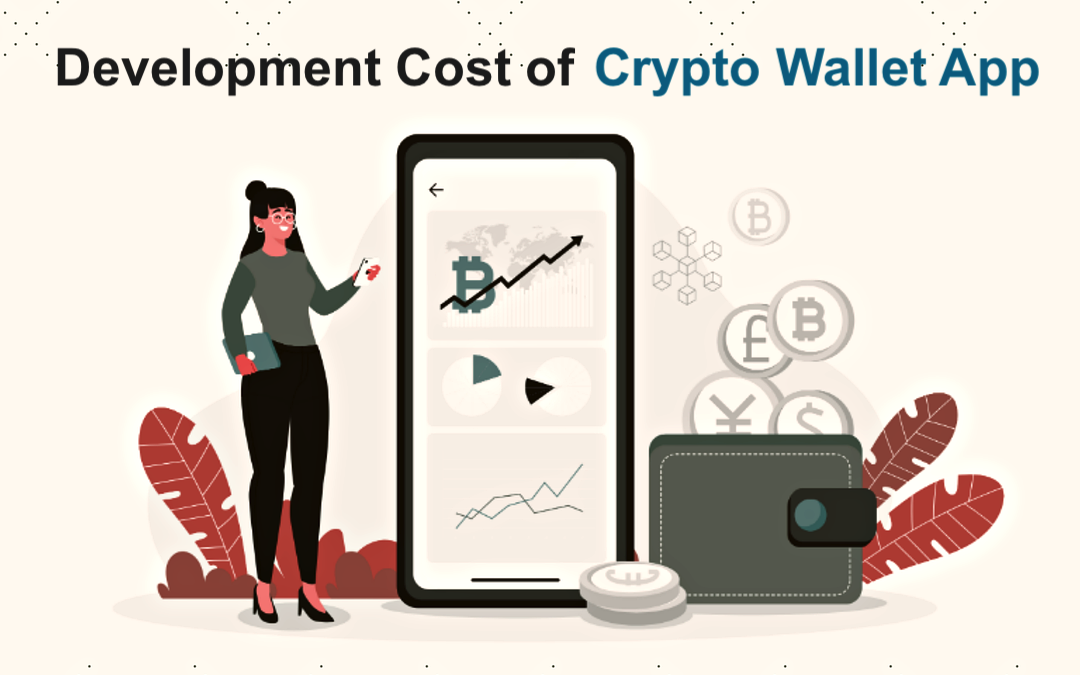
Creating a crypto wallet app calls for a number of elements that could greatly affect the whole cost. The ultimate pricing is determined in part by the app's complexity, the technology applied, and the features demanded. The main factors influencing the cost of creating a crypto wallet app will be broken out in the article paper together with the influence of blockchain technology, necessary functionality, and the development process.
Cost Factors in Crypto Wallet App Development
1. Features and Functionality
Features and functionality you wish to incorporate will first affect the price of creating a crypto wallet software. Usually, basic features comprise:
- Wallet Creation: Letting consumers design and run their wallets.
- Transaction Management: Helping with sending, receiving, and balancing checks.
- Security Features: Putting multi-factor authentication and encryption into use to guard user information.
Advanced features, which can increase development costs, might include:
- Multi-Currency Support: Allowing exchanges of several coins.
- Integrated Exchange Services: Letting consumers trade coins from inside the app.
- User Analytics: Providing insights into user behavior and transaction patterns.
- The more complex the features, the higher the development costs will be.
2. Blockchain Technology
Another important determinant of the cost of creating a crypto wallet software is the blockchain technology option. Various blockchains provide varied degrees of support for different cryptocurrencies, scalability, and security. Important issues include:
- Blockchain Type: Choosing between private blockchains depending on your needs or public blockchains like Ethereum.
- Integration Complexity: The difficulty of interacting with the selected blockchain can affect the cost and development period.
- Transaction Fees: Transaction fees vary depending on the blockchain you choose, which will influence the total cost should your app process significant transaction volume.
Choosing the right blockchain technology is essential for balancing functionality and cost.
Development Process and Cost Breakdown
1. Design and Prototyping
Developing the app's user interface (UI) and user experience (UX) comes under the design stage. This period comprises:
Wireframes: Drawing the app's basic flow and layout.
UI/UX Design: Designing user interactions and visual components.
Making sure the design of the app satisfies user expectations and utility requires first prototyping. The intricacy of the app and the experience of the design team determine the expenses of design and prototype.
2. Development and Coding
The real crypto wallet app coding occurs during the development stage. This stage consists of:
- Backend Development: Constructing the server-side data storage and transaction handling framework.
- Frontend Development: Designing the user interface of the program and tying it into the backend.
- Blockchain Integration: Linking the app to the selected blockchain will let Bitcoin transactions take place.
The technology stack used, the feature complexity, and the rates of the development team will affect the development cost.
3. Security Measures
Development of a crypto wallet application depends critically on security. Using strong security measures entails:
- Encryption: Safeguarding transaction records and user data.
- Authentication: Providing safe user access with two-factor authentication.
- Compliance: Following legal requirements guarantees the software runs legally.
While it can raise development expenses, investing in robust security measures is absolutely essential to stop possible breaches and safeguard user payments.
4. Testing and Quality Assurance
A crucial phase of the development process, testing guarantees that the program runs as intended and is free of faults. This stage entails:
- Functional Testing: Making sure every function performs as expected.
- Performance Testing: Evaluating the app's performance under several circumstances.
- Security Testing: Spotting weaknesses and making sure the app's security features work as they should.
Quality control guarantees a flawless user experience and helps to avoid expensive problems after launch. The intricacy of the app and the degree of the necessary testing will determine the testing expenses.
Ongoing Costs and Maintenance
1. Regular Updates
Maintaining and updating the crypto wallet software costs money even after the first development. These comprise:
- Bug Fixes: Attending to any problems that develop following the app's launch.
- Feature Enhancements: Adding fresh features or honing current ones in response to user comments.
- Security Patches: Changing security policies to handle developing hazards.
Maintaining the security and functionality of the app depends on regular updates, hence these continuous expenses should be included in the whole budget.
2. Compliance and Legal Considerations
In the realm of cryptocurrencies, keeping compliance with laws and legal criteria is absolutely vital. This comprises:
- Regulatory Compliance: Making sure the software follows the rules and legislation in several countries.
- Legal Fees: Paying any expenses associated with compliance checks or legal advice.
Legal issues can change based on the areas the app runs in and the particular laws relevant to bitcoin transactions.
Conclusion
The features and functionality, blockchain technology choice, development process, and continuous maintenance of a crypto wallet app can all affect its cost greatly. Understanding these elements and making suitable plans will help you to properly handle your budget and produce a safe and useful crypto wallet app.
Whether your goal is a feature-rich application or a simple wallet, thinking through the several components of the development process will help you project expenses and make wise choices. With the correct strategy, you can create a crypto wallet app that satisfies your demands and those of your consumers.
Share this post
Leave a comment
All comments are moderated. Spammy and bot submitted comments are deleted. Please submit the comments that are helpful to others, and we'll approve your comments. A comment that includes outbound link will only be approved if the content is relevant to the topic, and has some value to our readers.

Comments (0)
No comment